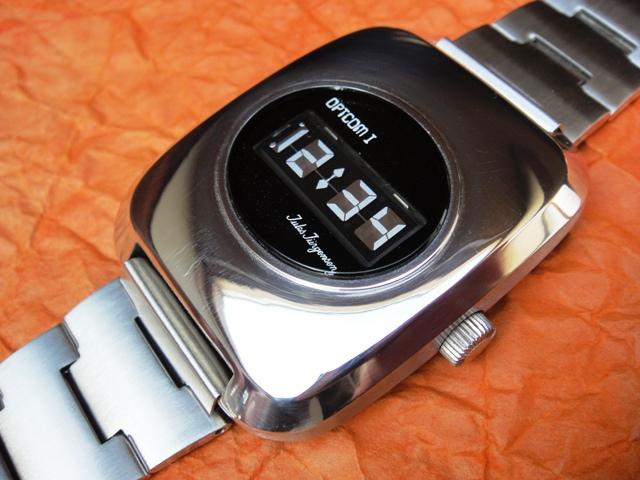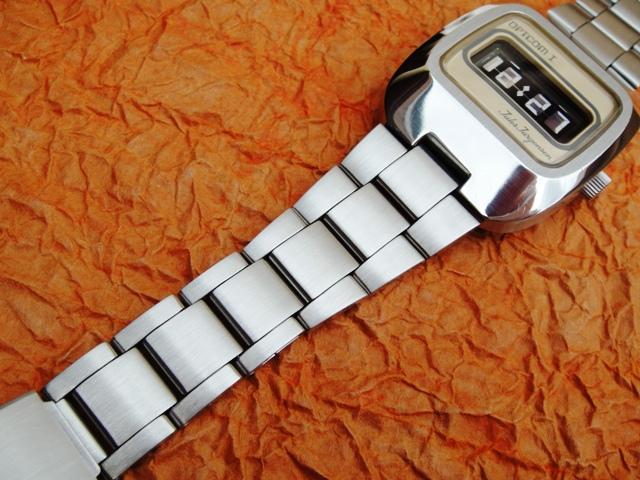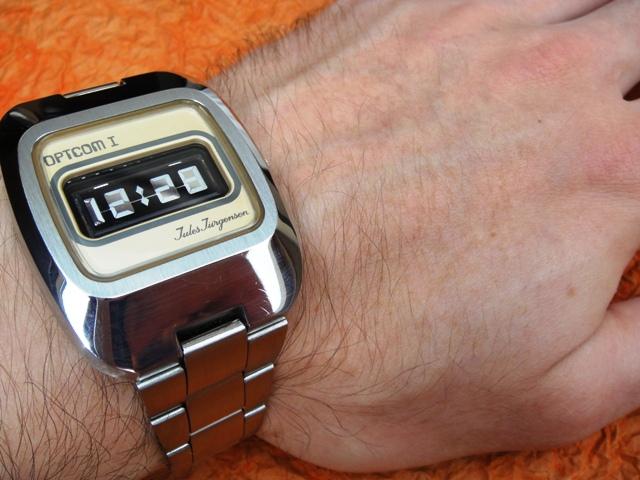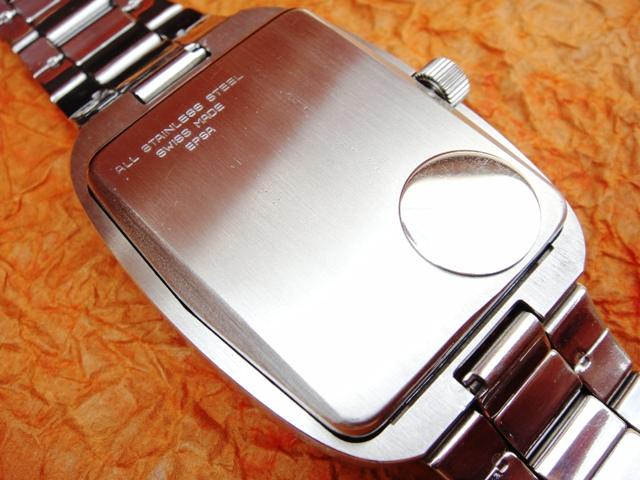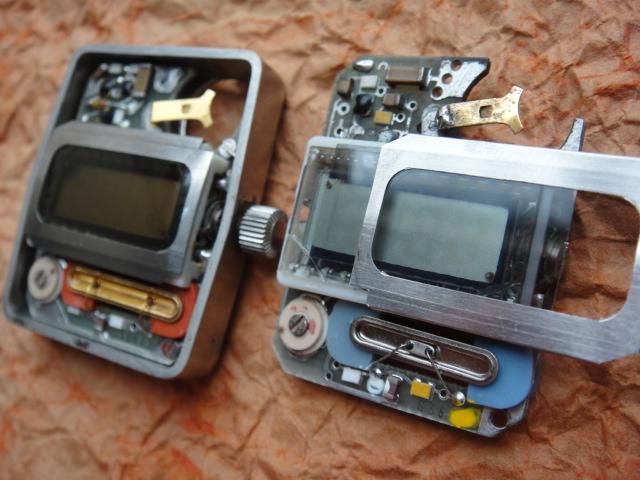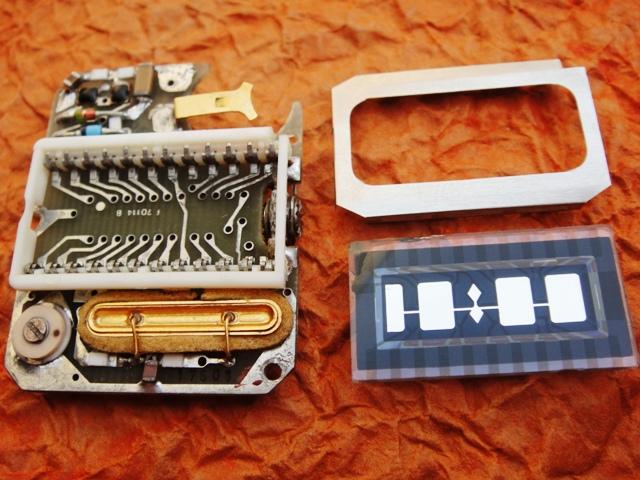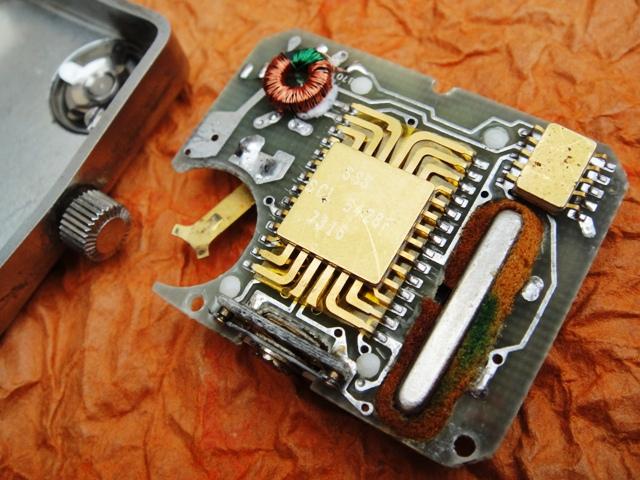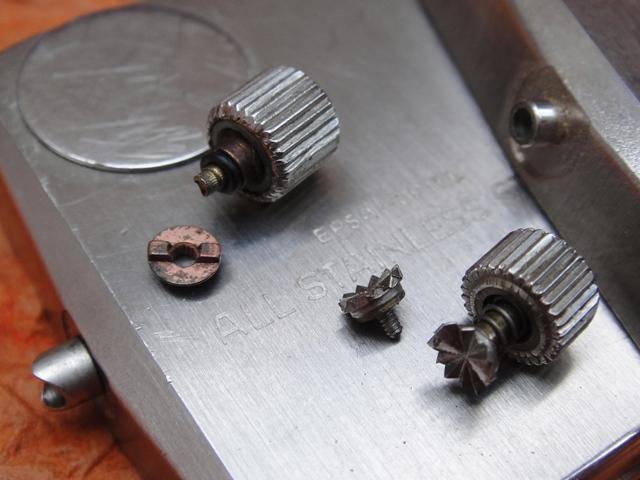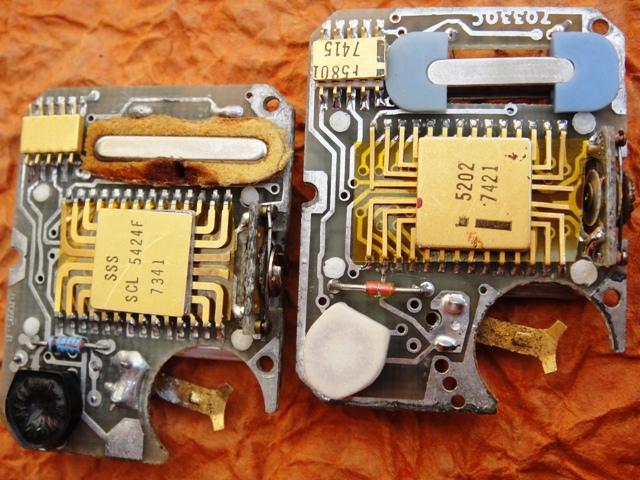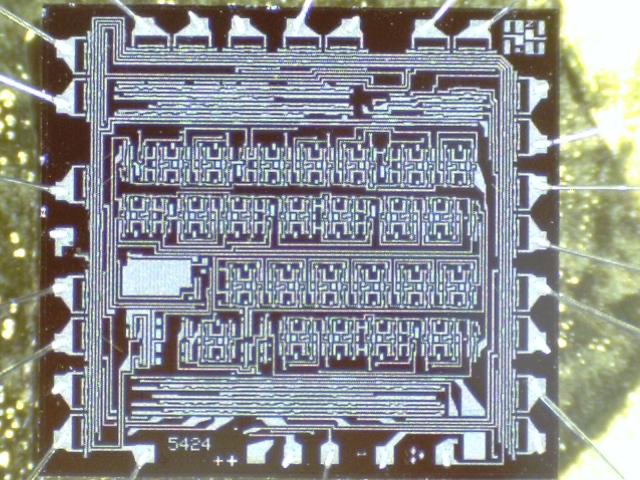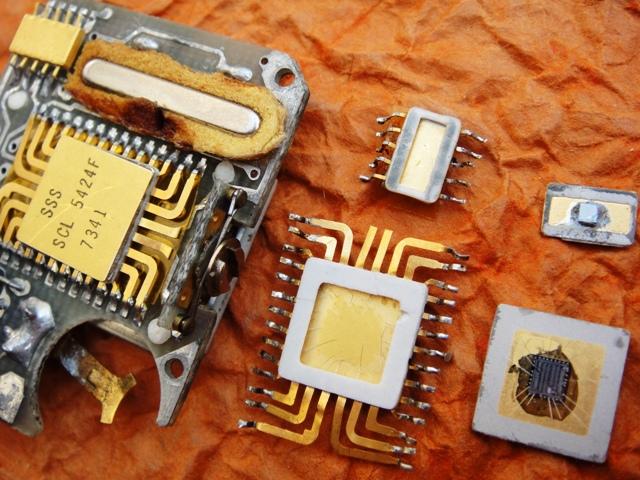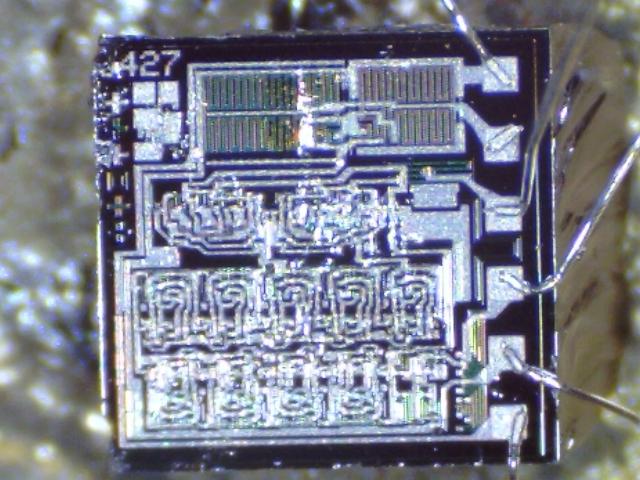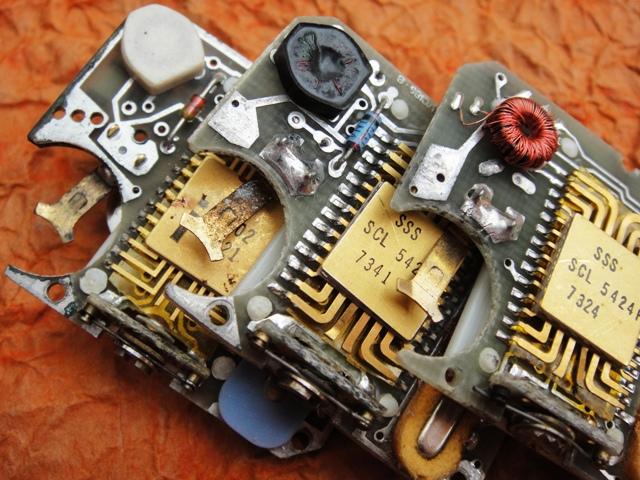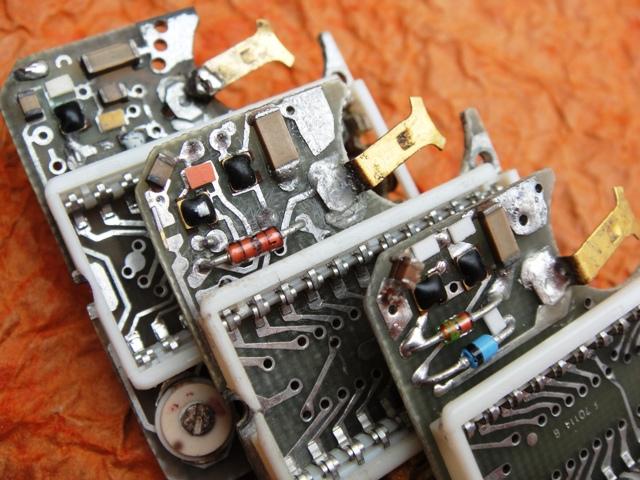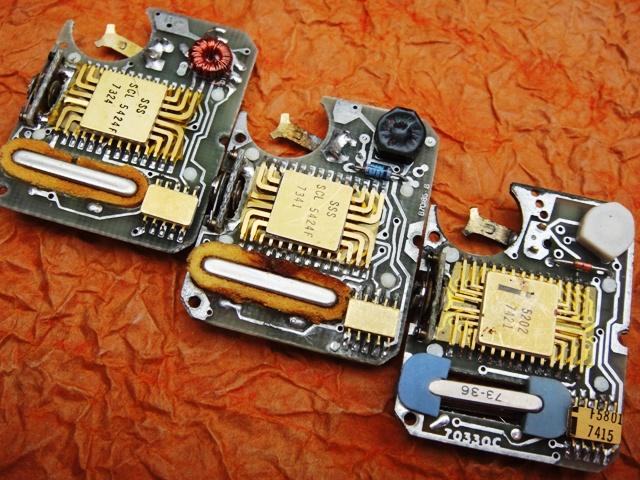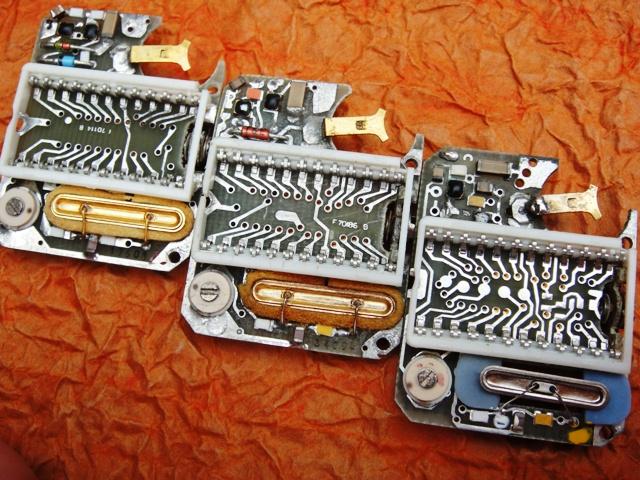JULES JURGENSEN OPTCOM OPTEL DSM LCD 1972
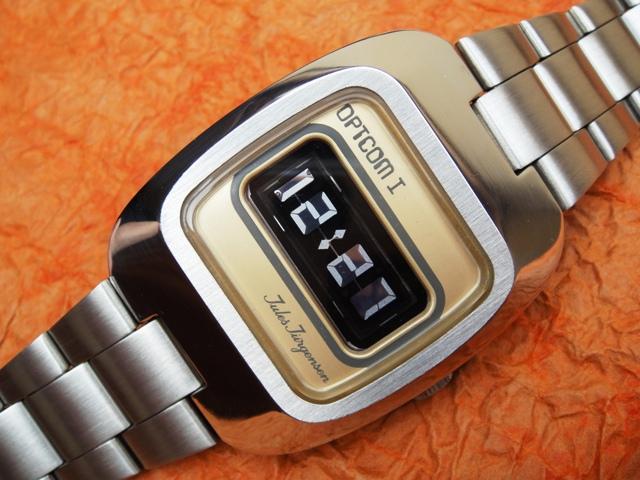 Followed by the introduction of the round BWC Swiss DSM, Optel marketed their modules in a whole bunch of different watch brands that subcontracted these watches with their logos. You can easily find identical square Optels sold as Neuvex, Segtronic, Zodiac but the most common is the "Optcom I" by Jules Jurgensen. Jurgensen established in 1740 was once a top shelf manufacture but already in the 1960/70's it was just a brand owned by some entity. Fortunately enough they must have been quite lucky with their strategy as the early LCD watches boosted sales quite significantly despite the high prices equal to Pulsar LEDs of approximately 275$ in 1972/73. All of these square models are housed in snap-fit Swiss cases by E.Piquerez SA (EPSA) thus many are incorrectly sold as EPSA-Optel.
Followed by the introduction of the round BWC Swiss DSM, Optel marketed their modules in a whole bunch of different watch brands that subcontracted these watches with their logos. You can easily find identical square Optels sold as Neuvex, Segtronic, Zodiac but the most common is the "Optcom I" by Jules Jurgensen. Jurgensen established in 1740 was once a top shelf manufacture but already in the 1960/70's it was just a brand owned by some entity. Fortunately enough they must have been quite lucky with their strategy as the early LCD watches boosted sales quite significantly despite the high prices equal to Pulsar LEDs of approximately 275$ in 1972/73. All of these square models are housed in snap-fit Swiss cases by E.Piquerez SA (EPSA) thus many are incorrectly sold as EPSA-Optel.
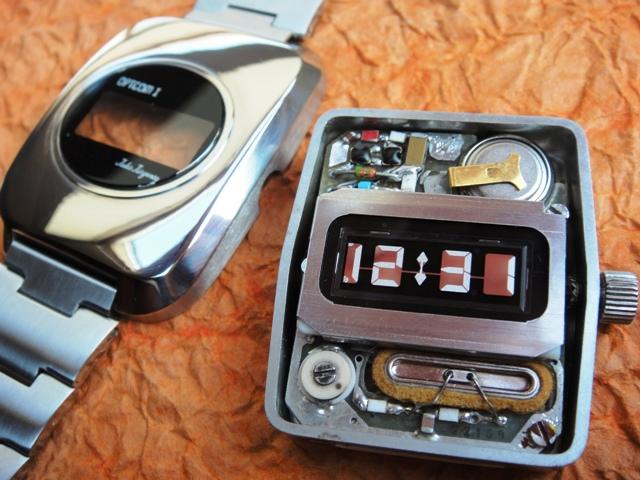 Based on my collecting experience there were 4 square Optel LCD versions: 1) DSM flashing display (intended to preserve battery life) controlled with chip 5428F made up to approx. serial number 15.000; 2) DSM constant display, flashing collon, with 5424F chip, approx. 35.000; 3) Field Effect black on "white", with 5424F chip, approx. 60.000; 4) Field Effect with 5202 chip onwards. Only square modules are found with the early 5428F flashing microchips although it is the round module (with the obsolete large 355 battery) that is said to be the first. The flashing display chip must have been applied as a temporary workaround to extend battery life of the smaller 357 cell. The square construction is simplified yet many components including the 5428 and 5424 chips (excluding late 5202) can be transplanted between the round and square.
Based on my collecting experience there were 4 square Optel LCD versions: 1) DSM flashing display (intended to preserve battery life) controlled with chip 5428F made up to approx. serial number 15.000; 2) DSM constant display, flashing collon, with 5424F chip, approx. 35.000; 3) Field Effect black on "white", with 5424F chip, approx. 60.000; 4) Field Effect with 5202 chip onwards. Only square modules are found with the early 5428F flashing microchips although it is the round module (with the obsolete large 355 battery) that is said to be the first. The flashing display chip must have been applied as a temporary workaround to extend battery life of the smaller 357 cell. The square construction is simplified yet many components including the 5428 and 5424 chips (excluding late 5202) can be transplanted between the round and square.
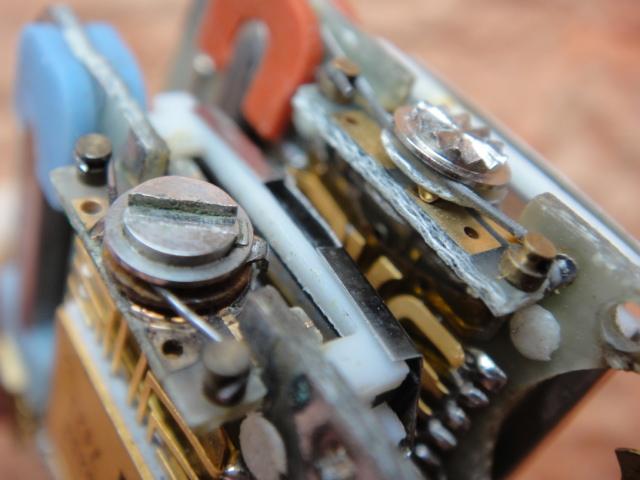 Pictured below in 200x magnification are the microchips by SSS Inc. (Solid State Scientific) a leading Integrated Circuit producer in those days. Their IC's are known for useful 4-digit date codes of which the first two indicate the year 1973 on most Optels (1974 on late 5202 chips). It's is impossible to open these ceramic packets without damage thus repairing wirebonds on the wafers with silver epoxy is not a solution. The most akward concept in Optel watches are the setting manipulators turned by a spring-loaded crown made in two versions. The early type is ordinary with screwed on stem with "setting table" that needs to be affixed with glue to prevent unscrewing. The later type is press-fitted and should not be removed. The crown is pushed and turned (max!) 50° clockwise to advance hours and counterclockwise for minutes.
Pictured below in 200x magnification are the microchips by SSS Inc. (Solid State Scientific) a leading Integrated Circuit producer in those days. Their IC's are known for useful 4-digit date codes of which the first two indicate the year 1973 on most Optels (1974 on late 5202 chips). It's is impossible to open these ceramic packets without damage thus repairing wirebonds on the wafers with silver epoxy is not a solution. The most akward concept in Optel watches are the setting manipulators turned by a spring-loaded crown made in two versions. The early type is ordinary with screwed on stem with "setting table" that needs to be affixed with glue to prevent unscrewing. The later type is press-fitted and should not be removed. The crown is pushed and turned (max!) 50° clockwise to advance hours and counterclockwise for minutes.
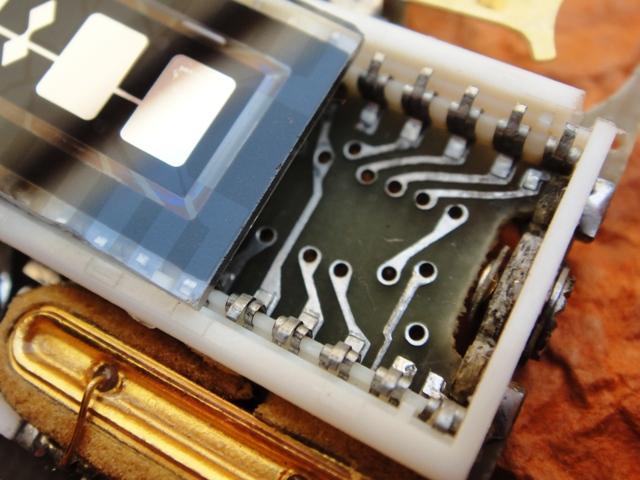 The display is snugly fitted in a plastic housing with 24 metal pins that must provide excellent connectivity with the traces on the display. Missing display segments might result from lack of proper connection that is usually caused by: 1) bad solder joints on the substrate 2) low tension provided by a metal frame that is slid from the side onto the plastic housing 3) damage to the chip feet. Poor connectivity might be corrected by manipulating the metal display pins/springs or by applying some silver epoxy on the worn out /scratched display traces. DO NOT press the display to much on the corners as the glass might break! Removing the display requires removing the module from the caseback to allow the frame to be slid away. Pull slightly with a fingernail and do not use excessive force! When closing the module in the snap-fit casing hold by the metal and DO NOT press the crystal which might get loose and smash the glass display.
The display is snugly fitted in a plastic housing with 24 metal pins that must provide excellent connectivity with the traces on the display. Missing display segments might result from lack of proper connection that is usually caused by: 1) bad solder joints on the substrate 2) low tension provided by a metal frame that is slid from the side onto the plastic housing 3) damage to the chip feet. Poor connectivity might be corrected by manipulating the metal display pins/springs or by applying some silver epoxy on the worn out /scratched display traces. DO NOT press the display to much on the corners as the glass might break! Removing the display requires removing the module from the caseback to allow the frame to be slid away. Pull slightly with a fingernail and do not use excessive force! When closing the module in the snap-fit casing hold by the metal and DO NOT press the crystal which might get loose and smash the glass display.
Keywords: optel, dsm lcd, optcom, jules jurgensen, segtronic
Market value: 200-500$ (version, condition, box)

